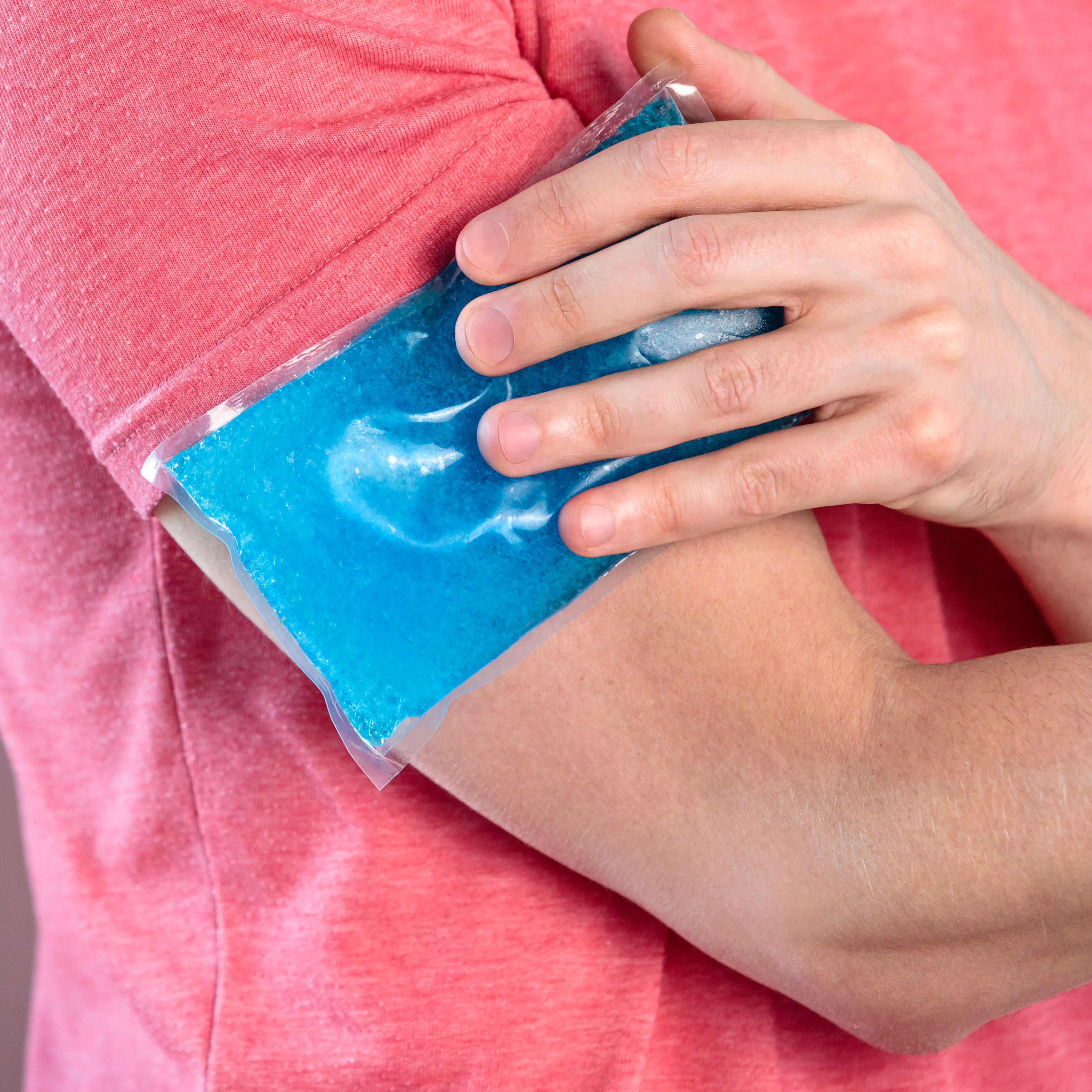For people living with pain (both acute and chronic) it can be challenging to manage. Each person experiences pain differently (see article “What is pain?”) and as such each treatment plan needs to be tailored to each and every individual. Treatment may include pharmacological (medicines) or non-pharmacological treatments and often requires a combination of therapies to achieve the maximum benefit. Generally, the aim of treatment is to target the cause of the pain wherever possible and thus the pain. In cases where that is not possible, management strategies may focus specifically on the pain.
Understanding pain
Patient fear and anxiety associated with their pain is associated with poor outcomes (Schug et at., 2015). It contributes to a greater impact on daily activities, higher pain levels and results in an increase in risk of transition from acute pain to chronic pain (Schug et al., 2015). Learning about and understanding pain can help alleviate patient fear and anxiety improving patient recovery. Patients experiencing psychological factors associated with pain should seek assistance from their healthcare professional at the first signs of these symptoms or as soon as possible. Early intervention has been shown to have considerable impact in the treatment of pain.
Psychological treatments such as cognitive behavioural therapy, hypnosis, relaxation or mediation can help patients change how they think and hence how they feel about pain. This is an important tool in the self-management of chronic pain (Better Health Channel, 2020).
Heat and Cold Therapy
Cold therapy is of most benefit when there is swelling and inflammation particularly at the onset of injury (within the first 48 hours). It may also temporarily numb sore tissues to assist with pain. Once swelling and inflammation has subsided then it is recommended that cold therapy should be ceased. Cold therapy may take the form of ice pack, gel packs, cold gels, a bag of frozen food or ice cubes. When using cold therapy apply an ice pack or cold pack for 15 minutes every 2 hours for 24 hours after the injury, then for 15 minutes every 4 hours for 24 hours (St John Ambulance Australia, 2020).
Heat therapy differs in the type of pain it may assist. It appears to improve flexibility and range of movement in the ligaments and muscles and may assist with muscle spasms. Heat therapy has more of a place in chronic muscle or joint pain. There are many ways you can use heat therapy including heat packs, heat patches, heat rubs and a warm bath or shower (Musculoskeletal Australia, 2020).
Contrast therapy involves the use of both heat and cold therapy. It comprises a series of brief repeated exposures alternating between warm and cold temperatures. Current evidence suggests that contrast therapy is superior in relation to muscle soreness and muscle function when compared to rest and passive therapy (Bieuzen et al., 2013).
Cautions:
- Be aware of the temperature – it should always be comfortable.
- Wrap heat or cold packs in a towel or cloth to help protect your skin from burns and tissue damage.
- Check your skin regularly to make sure that you aren’t having any harmful effects from the heat or cold.
- Be very careful using on areas of your skin with poor sensation to heat or cold.
- Never use heat or cold over an area of skin where you’re numb, or you can’t feel light touch or the difference between hot and cold – there’s a high risk of burning or damaging your skin.
- These treatments shouldn’t be used for long periods of time.
- Heat or cold treatments shouldn’t be used on open wounds or damaged skin. Follow the instructions on the pack of patches, rubs, packs and gels.
- When using rubs or gels avoid contact with sensitive areas (e.g., your eyes) and wash your hands thoroughly after applying.
- If you’re using a wheat bag, make sure you allow it to cool completely before you reheat it.
- Don’t sleep with your wheat bag or smother it behind you in your chair or bed. This can cause them to overheat and catch fire. Always carefully follow the manufacturer’s instructions for use and never overheat them in the microwave.
Physical therapy
Physical therapies such as walking, stretching, strengthening and aerobic exercises and massage have been shown to reduce pain and improve mood in some types of pain (Gelhorn et al., 2012; López-Sendínet al., 2012). Physical therapy should be routinely used in the treatment of lower back pain (Shipton, 2018); however, exercises may need to be gradually increased to avoid further injury. Massage may assist in the management of soft tissue injuries but is not recommended if the pain is in the joints.
Pain relievers
Medicines that reduce the feelings of pain are called pain relievers or analgesics. They work on the body’s nervous system to reduce the processes involved in pain. (NPS MedicineWise, 2021). Some pain relievers are available over the counter from pharmacies. Pain relieving medicines don’t always stop all pain but can reduce pain to a level that does not affect daily life. There are a number of different types of pain relievers that work in different ways and suit different types of pain. The choice of a pain reliever and how well it relieves the pain depend on a number of things. In choosing the right pain medicine the following should be considered:
- Other medications, including complementary medicines, that you take
- Other medical conditions
- The type, duration and location of the pain
- Causes of the pain, if known
- Treatments currently or previously tried
- Impact of pain on lifestyle.
Speak to your pharmacist or GP about these factors to ensure you choose the safest and most effective pain reliever for your circumstances.
When to see a doctor about pain.
If pain persists or is accompanied by any of the following symptoms a referral to a doctor is important.
- Bleeding
- Pain from the central spinal region
- Difficulty breathing or maintaining circulation
- Dizziness
- Fever
- Gradual onset pain
- Headache that worsens on standing or lying down
- History of recent physical injury
- Impaired consciousness
- Loss of physical function, particularly on one-side of the body
- Neck pain or stiffness with sensitivity to light
- Recent head trauma, usually within past three months
- Progressive or persistent headache or headache that has changed dramatically
- Unexplained seizure
- Severe, continuous pain
- Sudden onset severe headache, reaching maximum intensity within five minutes
- Unexplained weight loss
- Difficulties with vision.
Where one or more of these symptoms has been identified, patients should seek medical attention for assessment by their GP or hospital emergency department.
If you are concerned about your pain, please contact one of our friendly pharmacists or your GP.
REFERENCES
Better Health Channel. (2020). Pain and pain management-adults. Retrieved from https://www.betterhealth.vic.gov.au/health/conditionsandtreatments/pain-and-pain-management-adults
Bieuzen, F., Bleakley, C., & Costello, J. (2013). Contrast water therapy and exercise induced muscle damage: a systematic review and meta-analysis. PloS one, 8(4), e62356. https://doi.org/10.1371/journal.pone.0062356
Gellhorn, A. C., Chan, L., Martin, B., & Friedly, J. (2012). Management patterns in acute low back pain: the role of physical therapy. Spine, 37(9), 775–782. Retrieved from https://doi.org/10.1097/BRS.0b013e3181d79a09
López-Sendín, N., Alburquerque-Sendín, F., Cleland, J., & Fernández-de-las-Peñas, C. (2012). Effects of physical therapy on pain and mood in patients with terminal cancer: a pilot randomized clinical trial. Journal of alternative and complementary medicine (New York, N.Y.), 18(5), 480–486. Retrieved from https://doi.org/10.1089/acm.2011.0277
Musculoskeletal Australia. (2020). Heat and Cold therapy. Retrieved from https://www.msk.org.au/heat-and-cold/
NPS MedicineWise. (2021). Pain: what is going on? Retrieved from https://www.nps.org.au/consumers/pain-what-is-going-on
Schug, S., Palmer, G., Scott, D., Halliwell, R. & Trinca, J. (2015). Acute pain management: scientific evidence. Retrieved from https://www.anzca.edu.au/getattachment/4c3b03b7-52bf-4c10-9115-83d827c0fc38/Acute-Pain-Management-Scientific-Evidence.aspx
Shipton E. A. (2018). Physical Therapy Approaches in the Treatment of Low Back Pain. Pain and therapy, 7(2), 127–137. https://doi.org/10.1007/s40122-018-0105-x
St John Ambulance Australia. (2020). First aid fact sheet: Sprain and strain. Retrieved from https://stjohn.org.au/assets/uploads/fact%20sheets/english/Fact%20sheets_sprain%20and%20strain.pdf



